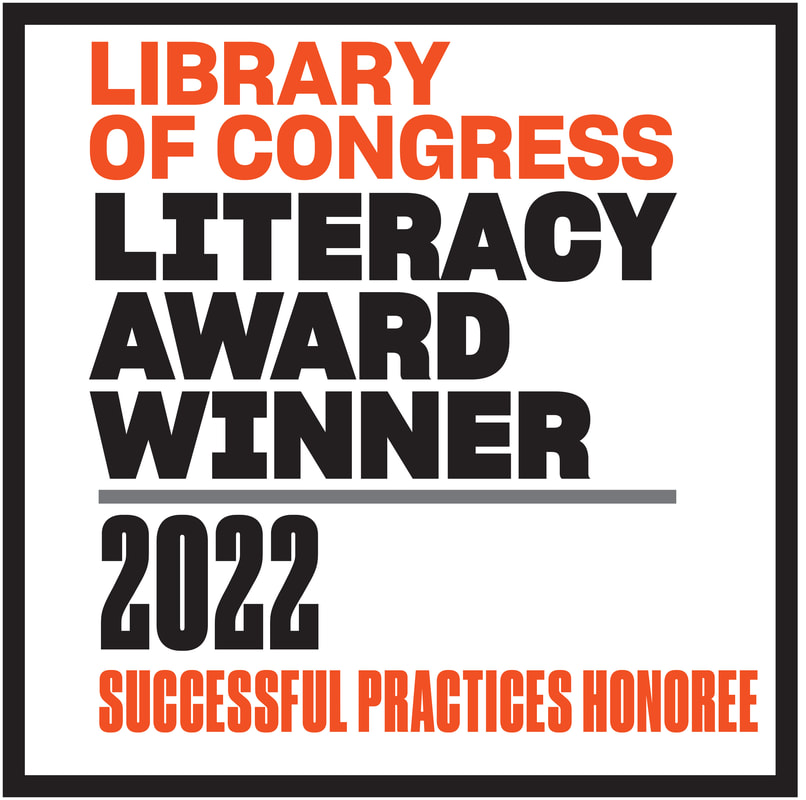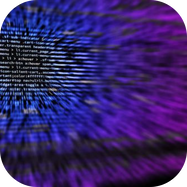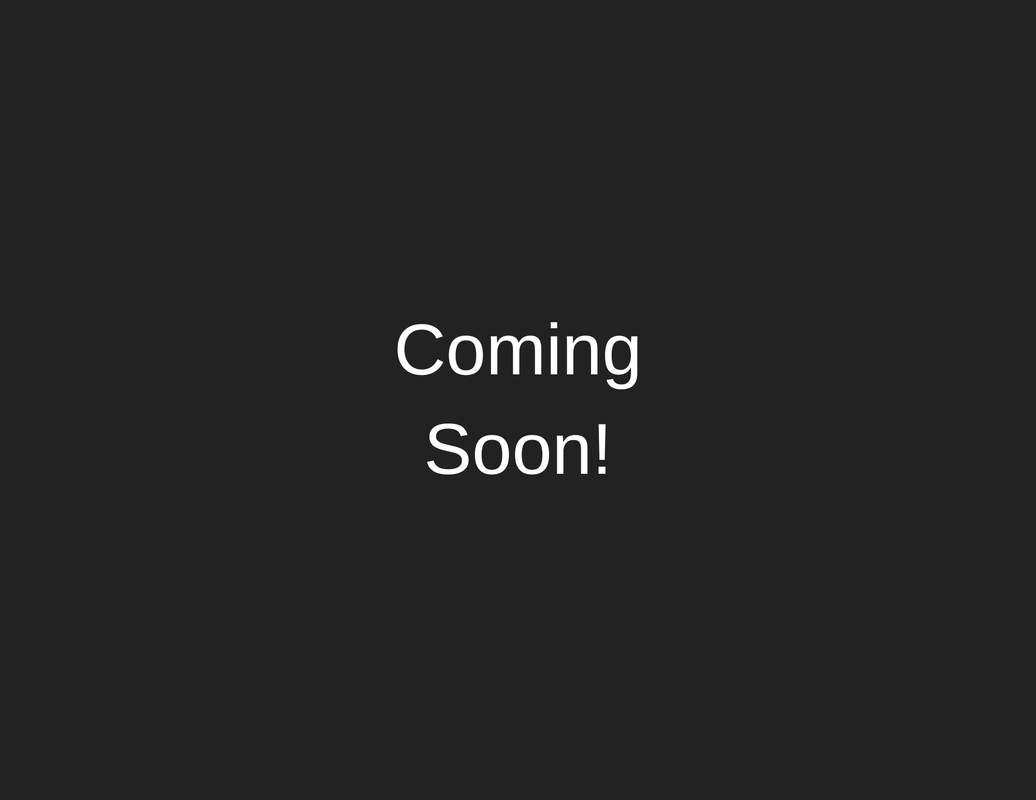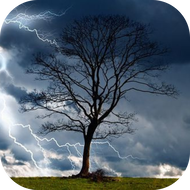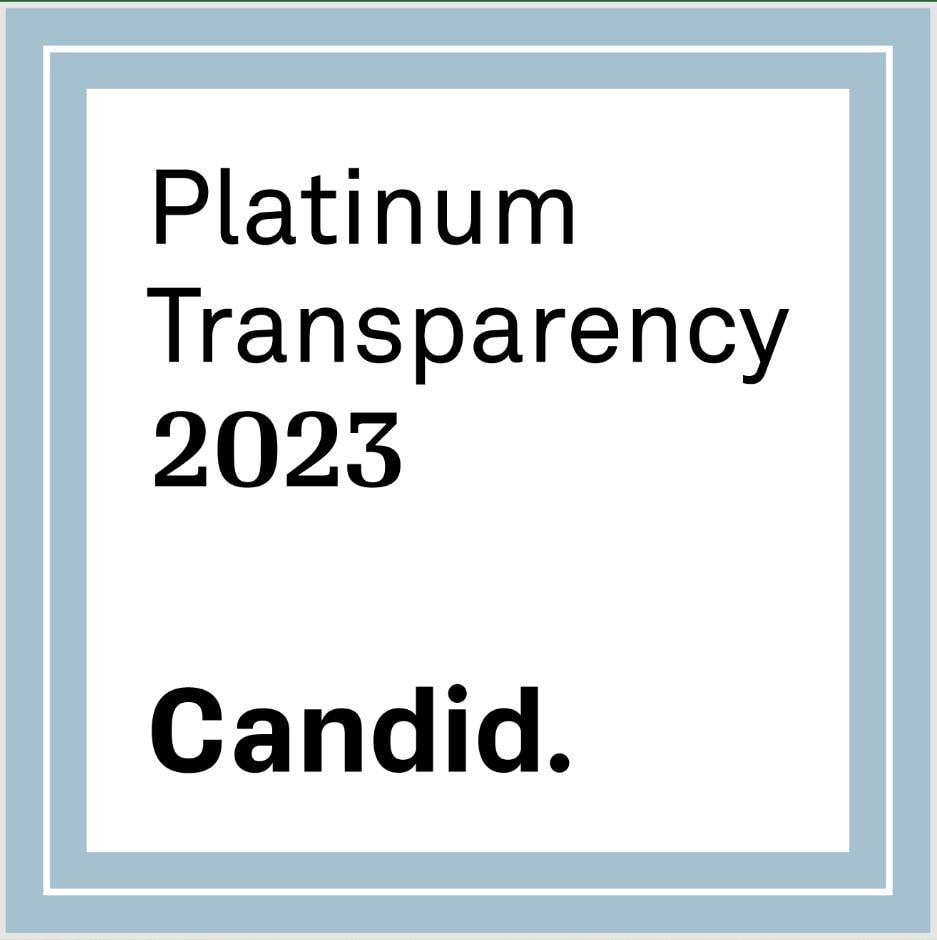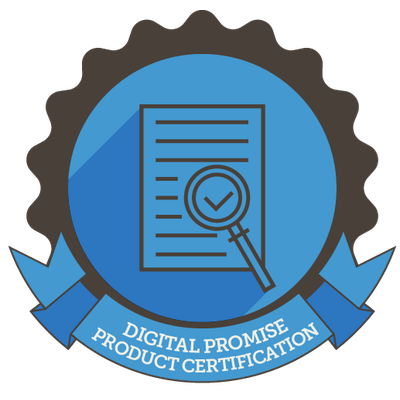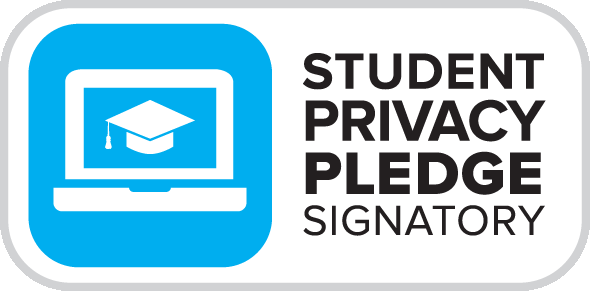Explore Our Newest Content“The opportunity to use the Scope and Sequence Article-A-Day auto assignments is fantastic! I teach 120 students, so this is perfect to stay organized!!” —Kim, Educator Written by:
Becca Vaughn, Director of Development
0 Comments
ReadWorks is an edtech nonprofit focused on improving reading comprehension. We have a deep-seated belief that ALL students deserve a high-quality reading education, one that is based on research, to give them the best possible chance at success in school and in life. Through our digital platform, we provide research-based content and curricular supports that integrate with core English Language Arts (ELA) curricula. By providing reading content that reflects the diversity of our world—and that is freely accessible to all—we work to ensure that every student can see themselves reflected in their reading materials. By providing free materials to make all educators more effective at teaching reading regardless of zip code, we are doing our part to move closer to a world of successful readers with bright futures ahead. Within the complexity of all that it takes to become a successful reader, Readworks' focus area is building students’ background knowledge and vocabulary. Research studies have shown time and again that, whether students are considered “strong” or “weak” readers when prior knowledge is equal, their reading comprehension is essentially the same (Recht & Leslie, 1988). By reading across a variety of topics, students gain a wide base of knowledge and vocabulary that they can draw upon as they encounter new texts. When students encounter this new knowledge, it easily sticks to existing knowledge. ReadWorks Article-A-Day is designed to help students build this critical background knowledge and vocabulary in just 10 minutes a day. Students choose an article to read each day from hand-curated text sets that focus on a new topic each week. They then watch their knowledge and vocabulary grow as they write about what they learn in their Books of Knowledge. With Article-A-Day, teachers can assign the same text for all students to read each day or allow students to choose an article each day from those in the set. This allows for both flexibility and intentional choice for educators and students. In two prior studies, we found that consistent implementation of Article-A-Day led to an increase in the length of students’ written Book of Knowledge responses and their use of Tier 2 and Tier 3 vocabulary (2020) and a 15% correlational increase in ELA test scores (2017). In these exploratory case studies, we sought to build on these findings by examining the impact on both individual students and the school community of classroom and whole-school implementation of Article-A-Day. Here are our major findings and links to each full case study:
Written by:
Serena Bradshaw, Research Specialist A sixth-grade Navajo educator, Mr. Leon Haskie, implemented Article-A-Day in his classroom for eight months, from September 2021 to May 2022. At Haskie’s school, Atsá Biyáázh Community School in New Mexico, over 90% of the students are connected to the Navajo tribe, and the other students are mixed with Navajo and another tribe. The school-wide ELA program is Journeys. The school also has monthly testing to measure student trends of success in each standard across reading, science, and math. In light of the impact of COVID-19 on student learning and the school’s shift to remote learning, Haskie started implementing Readworks, and more specifically Article-A-Day, as a digital supplement. He had the following goals for using Article-A-Day:
Haskie implemented Article-A-Day as a 10-minute bell ringer five days a week at the onset of class. Students picked an article of their choosing from the week’s Article-A-Day set. Once students had read their articles for that day and written in their Books of Knowledge, Haskie would call on random students to present what they learned from the Books of Knowledge. On some days, he also had students peer review other student's work, which took three to 10 additional minutes. Haskie found that this peer work led to greater student engagement. Haskie graded Article-A-Day as 20 points per article for a total of 100 points per week. For any additional articles students read outside of the required bell ringer, he gave them five extra points. We conducted a 30-minute interview with Haskie on July 27th, 2022. In this interview, we hoped to investigate two questions about Article-A-Day implementation:
After the interview, we transcribed and coded the transcript for themes to help us dig into our questions about the impact of Article-A-Day. Findings Haskie’s implementation of Article-A-Day produced many clear benefits. First, he found that student engagement increased in the virtual classroom setting. Second, he found that students’ reading and writing production both increased. Third, he also found that students improved on their monthly standardized testing by large percentages. Finally, through all of his success with Article-A-Day, his school asked him to lead a training to support implementing Article-A-Day schoolwide. 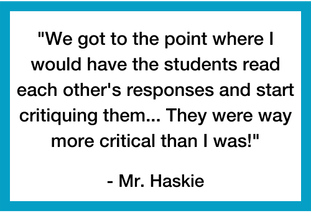 Finding #1: Increased Student Engagement Haskie implemented Article A-Day as a nonnegotiable in his classroom, which ensured that all students fully participated even with the challenge of virtual learning. After completion of Article-A-Day each day, he checked their work for the grade, and then the students began to join in on the review. He said, “We got to the point where I would have the students read each other's responses and start critiquing them. The students would say, ‘That's not a complete sentence’ etc. They were way more critical than I was!” This peer review engaged the students tremendously, so Haskie sought to implement new strategies to maintain this engagement but lessen the extra time it took: “I did not do every single student during a peer review. I had this program where I could select a random student. The students didn't know who was going to be drawn, so they were all responsible because they didn't want to be that child who didn't write down anything.” As this process continued, instead of feeling anxious about being called next, the students began volunteering themselves. This surprised Haskie: “At first, they were like, ‘Oh, I hope I don't get drawn.’ But as we started progressing throughout the year, I started to see that they would actually volunteer their work to be showcased.” This excitement about Article-A-Day, peer review, and being called on was evidence to Haskie of his students’ increased engagement. 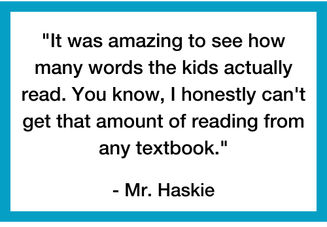 Finding #2: Increased Reading and Writing Adding on to the student's willingness to engage, Haskie also observed a noticeable increase in the amount students read and wrote. Haskie and the students could see, through Readworks’ word tracker report, how much more reading was happening. Both Haskie and his students were surprised at the amount that they were reading. Haskie said, “At first, the tracker read 100,000 words and then 150,000 words – you know, they were just surprised. It was amazing to see how many words the kids actually read. You know, I honestly can't get that amount of reading from any textbook.” Even the administration at Haskie’s school took notice of the increase in reading and asked Haskie how he got students to read so many words. When he explained that Article-A-Day had been used as a bell ringer and a supplement to their Journeys program, the school asked him to train other teachers on Article-A-Day so that the school, starting September 2022, could begin a school-wide adoption of Article-A-Day. Beyond the increase in the quantity of reading, Haskie also observed an increase in writing. He challenged his students to write throughout the year. He described his method as, “I started out with plain and simple. I was happy when they answered, that's all I cared about. That went on for like a good month. Then I increased it to wanting to see complete sentences. I kept that going for like 3 or 4 months. Then I increased the rigor. I expected them to cite from the article they read that day.” As he kept this up, the students began to write at more and at more complex levels. The teacher explicitly noted that, though his goal was to increase reading and engagement, he “saw the students’ growth in writing just from reading.” He attributed this to the simultaneous act of reading and writing about their experiences from the text. 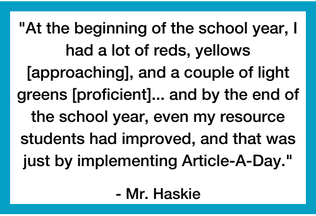 Finding #3: Improved Standardized Test Scores Haskie also observed improvement in students’ standardized test scores. Haskie did not shy away from explaining what he felt contributed to the improvement in scores for the students: “At the beginning of the school year, I had a lot of reds, yellows [Approaching], and a couple of light greens [proficient]. Dark green would be a highly proficient student. Then we progress-monitored, and by the end of the school year, even my resource students had improved, and that was just by implementing Article-A-Day.” According to Haskie, regular implementation of Article-A-Day was a key part of his students’ improved standardized test scores. Conclusion In this exploratory case study, we set out to understand the impact of one teacher using Article-A-Day regularly over an extended period of time, and we saw clear successes and benefits. Through Article-A-Day, students were more engaged which led to an increase in reading and writing on a personal level. On a systemic level, the administration saw improvements in this specific teacher's standardized test scores due at least in part to the implementation of Article-A-Day and are now implementing Article-A-Day school-wide. This shows that the implementation of Article-A-Day by an individual teacher can positively impact students’ academic and personal growth, help shift classroom culture, and ultimately inspire an all-school implementation. Written by:
Serena Bradshaw, Research Specialist Susanne Nobles, Ph.D., Chief Academic Officer Students’ imaginations will run wild while reading these new fiction series! Each series includes five to seven reading passages, and each text ends with a thrilling cliffhanger that will keep your students asking: "What happens next?" Get ready for some suspense with these modern topics that will interest 6th, 7th and 8th grade students. Assign, Print, Project or Save these attention-grabbing stories today.
Students are motivated to read when they have a preconceived idea of the setting, characters, and plot of a book series. Each text in a series builds on the ones that came before, which leads to enhanced engagement and comprehension skills in reading. Log in to access the full sets of each series today! You can also log in to search by topic to find other fiction passages. Written by:
Melissa Calder, Director of Marketing & Engagement Becca Vaughn, Director of Development This Halloween, nearly 170,000 middle school students across 48 states read the thrilling new story from ReadWorks, Alien Kids. In this five-part, cliffhanger series set on a faraway planet, readers follow the story of Francisco and Katie as they sneak beyond the fence of their space colony to explore on their own. To celebrate the new series, created as part of our Fiction Library Expansion Project, ReadWorks held a national illustration contest, giving students the chance to show their knowledge of the story in a creative and exciting way. With hundreds of entries, our volunteer judges picked one final winner and four runners-up.
We’re thrilled to share that our winner is Ada Hernandez, a 5th-grader in Texas. Ada’s teacher, Shannon, shared what it was like to read the story and complete the contest as a class, "I had already decided to incorporate more visualization strategies with my students and the ReadWorks' #AlienKids Illustration Contest was the perfect way to kickstart that routine. My students were highly engaged and motivated by the Alien Kids storyline! The cliffhangers kept them interested and they were thrilled to create a draft illustration after each chapter. Furthermore, creating the illustrations improved their overall reading comprehension by authentically prompting them to re-read the passages for details and/or discussing them with classmates." On the logistics of holding a contest, Shannon said, "For the contest entries, I asked the students to choose the chapter they felt they could develop the most, using the art technique of their choice. From traditional sketches and drawings to digital illustrations to collages and paintings - students' final creations were as unique as they are. I would definitely guide my students through another ReadWorks contest in the future!"
In addition to the winning entry, our judges selected four runners-up, one for each grade level that participated in the contest. See their outstanding entries below: It isn’t too late to get creative as a class! Use any of our exciting series to host your own illustration or alternate-ending contest as a classroom or school. Share your contest with ReadWorks on social media using #ReadWorksContest or share your contest stories with our team at [email protected]. Written by:
Becca Vaughn, Director of Development |
Categories
All
Archives
July 2024
|

